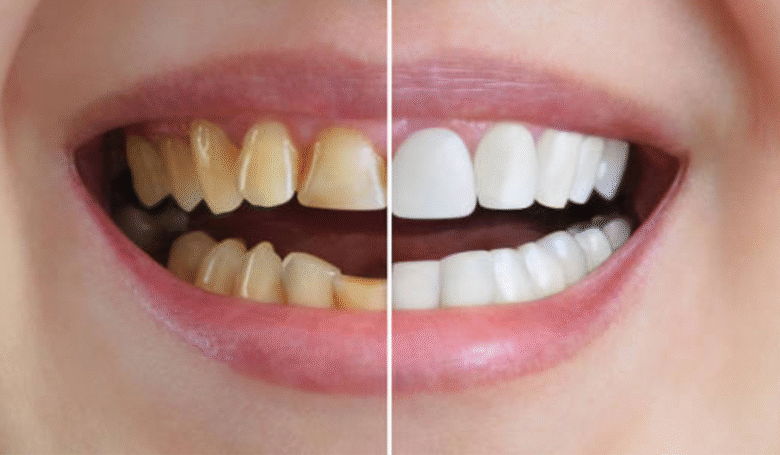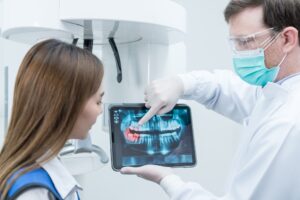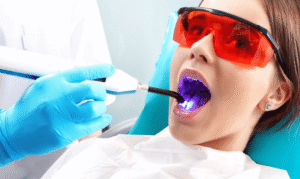Cosmetic dentistry has made great strides recently, changing the way dentists improve the appearance of their patients’ oral cavity. This branch of dentistry focuses on improving the aesthetic qualities of teeth, gums, and overall facial harmony. New equipment and techniques allow cosmetic dentists to perform treatments that are not only visually appealing but also long-lasting and minimally invasive. Technological advances in this field have made treatments faster, more accurate, and more comfortable for the patient, making it easier than ever to achieve a confident smile.
The Role of Digital Imaging in Designing a Smile
In cosmetic dentistry, digital imaging is absolutely essential. This technology allows dentists to create 3D scans and high-resolution photographs of a patient’s facial structure and teeth. These images are then used to more accurately plan cosmetic surgery. Patients can preview the expected results on a computer, allowing them to make informed decisions about their treatment. By taking into account facial symmetry, tooth shape, and even lip curves, digital smile design helps develop a personalized treatment plan to ensure natural and harmonious results.
Advanced Teeth Whitening Technology
Teeth whitening is one of the most popular cosmetic treatments. Thanks to dental technology, teeth whitening is safer, faster, and more effective than ever before. Modern whitening methods use advanced gels, lasers, and LED lights to whiten your teeth in just one visit. These systems can reduce tooth sensitivity and provide more consistent whitening results than over-the-counter alternatives. Using digital shade-matching tools and custom trays, we can ensure that patients receive consistent and natural results tailored to their specific smile.
Veneers and Bonding Materials: New Advances
Recent advances in materials and application methods have led to dramatic improvements in cosmetic dental treatments such as veneers and bonding. Today, ultra-thin yet strong materials like porcelain or composite mimic the natural transparency of tooth enamel to create veneers. The adhesive is also stronger and more color-matched, making it ideal for repairing gaps, cracks, or tears. Digital tools allow for precise adjustment and shaping, reducing the number of visits needed and improving the patient experience.
The Evolution of Clear Aligner Orthodontics
Straightening teeth no longer requires traditional metal braces. Clear aligner systems like Invisalign use digital scanning and 3D printing technology to create custom trays that gradually move your teeth into place. These aligners are more comfortable than metal braces, are removable, and are virtually invisible. Digital planning allows for highly accurate predictions of treatment plans and tooth mobility. Patients can also view simulations of how their smile will change before they begin treatment, increasing their confidence and satisfaction with it.
Laser Whitening and Gum Surgery
Thanks to laser technology, soft-tissue cosmetic dentistry has become more precise and comfortable. Laser contouring is a quick, painless way to reshape the gums, giving people with irregular gum lines or excess gums a more balanced smile. Some teeth whitening methods also use lasers to speed up and improve results. Because lasers are minimally invasive, there is less bleeding, faster recovery, and less discomfort than with traditional surgical instruments.
3D Printing for Cosmetic Dental Restorations
The process of performing cosmetic dental restorations is changing thanks to 3D printing. Dentists can use digital scans of their patients’ mouths to create and print crowns, veneers, and other restorations with astonishing precision. With this technology, restorations can often be completed the same day, reducing the time between consultation and final placement. The ability to print highly personalized and natural-looking dental components improves the aesthetics and overall satisfaction of patients undergoing cosmetic dental treatment. 3D printing also increases the accessibility and affordability of the entire process.
Smile Simulation Software for Personalized Planning
Another innovation that is changing the patient experience in cosmetic dentistry is smile simulation software. This program allows patients to visually see what their smile will look like after a few treatments. Dentists can use images and digital scans to simulate different procedures, such as bleaching, veneers, or braces, and customize the images based on the patient’s choice. This participatory approach improves communication, sets reasonable expectations, and gives patients a clearer understanding of their aesthetic goals.
Comfortable and Minimally Invasive Treatment
The emphasis on minimally invasive strategies is one of the most important advantages of current cosmetic dentistry technology. Advances in equipment and materials mean that many procedures can be performed without drilling or anesthesia. Air abrasion and microlaser are two techniques that allow dentists to precisely and gently repair small defects. These advances have led to more people seeking cosmetic improvements to their smiles, as they recover faster, experience less anxiety, and have a more pleasant overall experience.
Customized Treatment Strategies for Natural Results
Technology allows dentists to create more personalized treatment plans and move away from a one-size-fits-all approach. Modern technology allows dentists to develop cosmetic treatments that enhance each individual’s facial structure, tooth shape, and bite. After all, every patient is different. High-resolution images, digital impressions, and 3D modeling allow for detailed planning and execution. This personalization ensures that the cosmetic procedure not only enhances the appearance but also harmonizes with the rest of the mouth for long-term results.
Conclusion
Cosmetic dentistry is changing the way people view their smiles by providing more precise, comfortable, and effective treatments. With the tools available today, such as digital imaging and 3D printing, laser treatments, and clear aligners, it is easier than ever to achieve natural, long-lasting results. These advancements not only improve treatment but also increase patient confidence and well-being. The future of cosmetic dentistry is brighter than ever as technology advances and more options open up to protect and enhance your beautiful smile.
FAQs
1. What is cosmetic dentistry?
Cosmetic dentistry involves the use of cutting tools and techniques to improve the appearance of teeth, gums, and smiles. Examples include whitening, veneers, and orthodontics.
2. Is cosmetic dentistry just about appearance?
While cosmetic dentistry focuses on appearance, it can also improve dental health, function, and confidence by addressing issues such as misalignment, gaps, and tooth wear.
3. Is every cosmetic dental procedure performed using digital tools?
To improve accuracy, comfort, and results, most modern cosmetic procedures use digital technologies such as digital imaging, 3D printing, and laser technology.
4. How long does cosmetic dental treatment take?
While veneers, crowns, and braces can last for years with proper care and regular dental checkups, the lifespan of each technique varies.
5. Is cosmetic dentistry painful?
Most cosmetic dental procedures are painless or cause minimal discomfort, typically do not require anesthesia, and use modern equipment and minimally invasive techniques.




